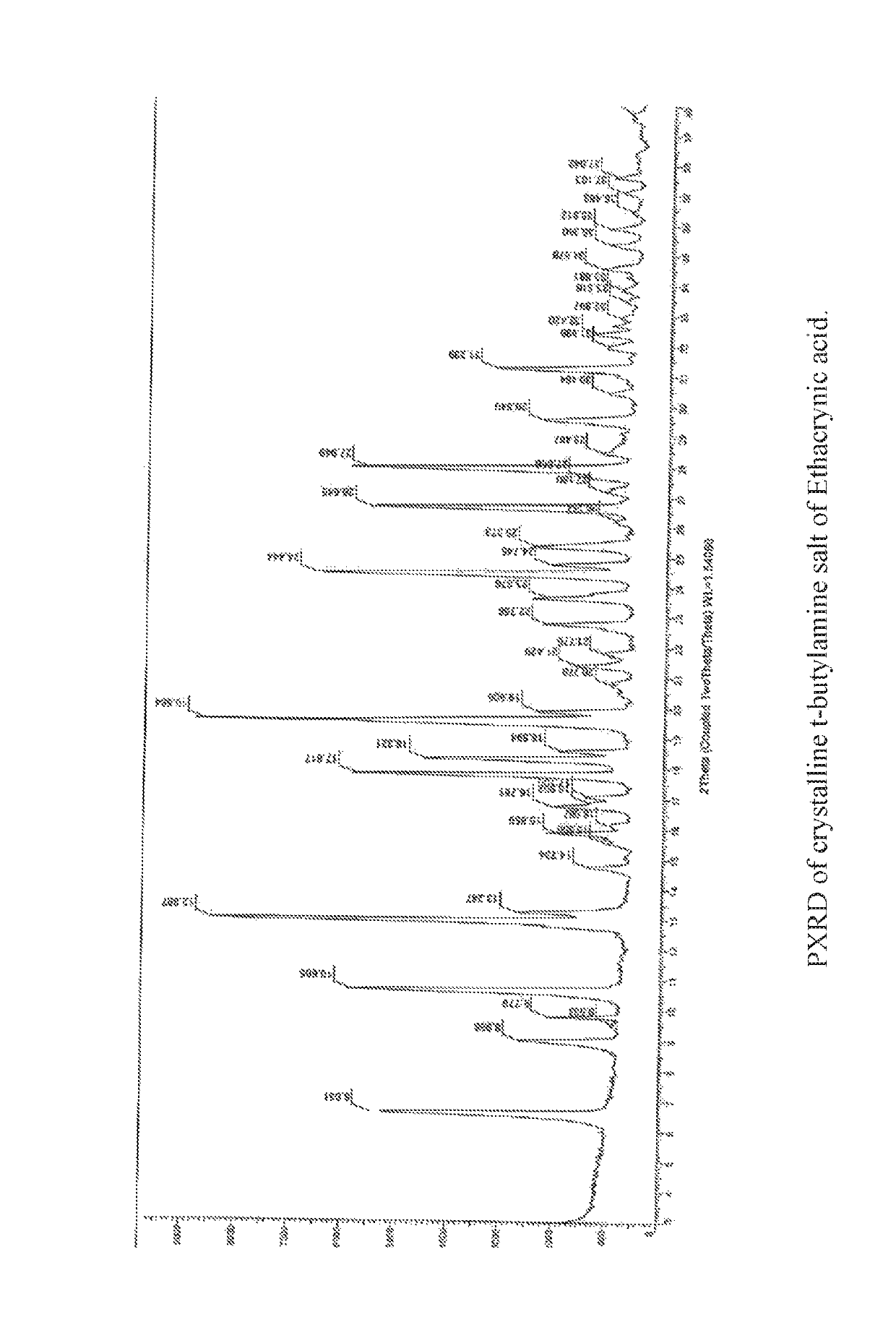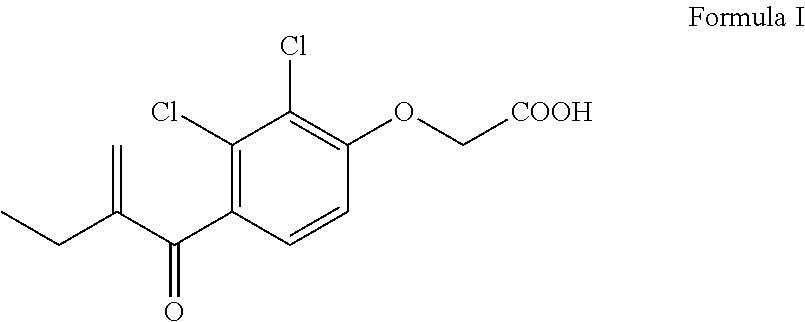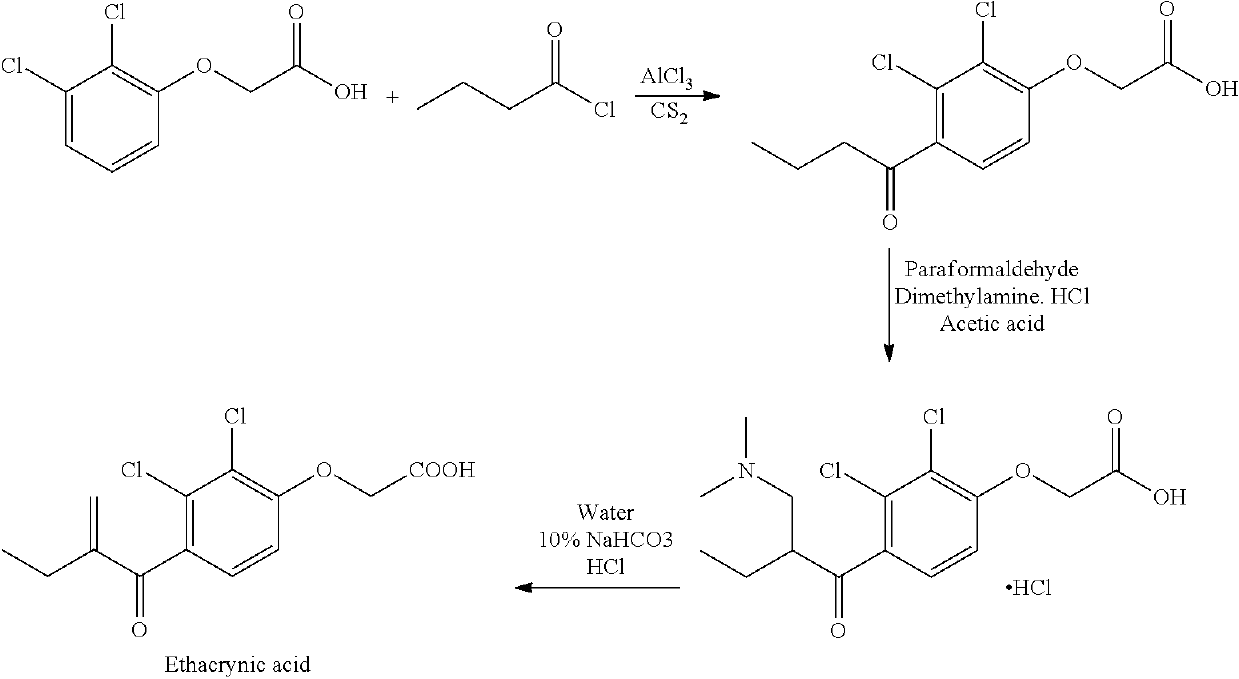Process for the preparation of ethacrynic acid
a technology of ethacrynic acid and ethacrynic acid, which is applied in the preparation of carboxylic compounds, organic chemistry, chemistry apparatus and processes, etc., can solve the problems of reducing the quality and yield of the final ethacrynic acid api, and achieves improved yield, simple and economically viable, and high purity
- Summary
- Abstract
- Description
- Claims
- Application Information
AI Technical Summary
Benefits of technology
Problems solved by technology
Method used
Image
Examples
example 1
on of 2,3-dichloro-4-hydroxybutyrophenone
[0093]To a mixture of anhydrous aluminium chloride (487.70 gm) and dichloromethane (5000 ml), 2,3-dichloroanisole (500 gm) was added at 30° C. and stirred for 10 min at the same temperature. This reaction mass was cooled to 20° C., then butyryl chloride (389.5 g) was slowly added at 25° C. and stirred the reaction mixture for 8 hours at 30° C. The progress of the Freidel Craft reaction was monitored by HPLC. Anhydrous Aluminium chloride (487.70 gm) was added to the reaction mass at 30° C. and stirred the reaction mass for 8 hours at 42° C. The progress of demethylation reaction was monitored by HPLC. After completion of the reaction, the reaction mass was cooled to 5° C. and water (2500 ml) was slowly added to the reaction mass at 15° C. The reaction mass was then distilled atmospherically for dichloromethane and under vacuum at 55° C. to obtain a concentrated residue. The concentrated residue was mixed with water (1500 ml) and toluene (1000 ...
example 2
on of 4-butyryl-2,3-dichloro-phenoxy acetic acid
[0094]Potassium carbonate (741.10 gm) was added to a slurry of 1-(2,3-dichloro-4-hydroxy phenyl)-butan-1-one (500.00 gm) in ethanol (4000 ml) at 30° C. and stirred for 20 minutes at the same temperature. Ethyl bromoacetate (716.46 gm) was added to the reaction mass at 30° C. and heated to 83° C. The reaction mixture was stirred for 12 hours at 83° C. The progress of the reaction was monitored by HPLC. After the completion of the reaction, ethanol in the reaction mass was distilled at 80° C. under atmospheric pressure. The residue was mixed with water (6500 ml) at 80° C. and stirred at 80° C. to get a clear solution. The obtained solution was cooled to 60° C. and then the pH of the solution was adjusted to 3.0 to 4.0 using 15% dilute hydrochloric acid at the same temperature. The resultant solid was filtered, washed with water (2000 ml) and dried at 50° C. under vacuum for about 8 hours. Yield: 92%.
example 3
[0095](a) Preparation of [2,3-dichloro-4-[2-dimethylaminomethyl butyrylphenoxy acetic acid: The solid obtained in example 2 (200 gm) was suspended in dimethyl formamide (500 ml). An aqueous solution of formaldehyde (37%, 82.51 gm) and dimethylamine hydrochloride (190.43 gm) was added into the reaction mass at 30° C. and stirred for 10 min at the same temperature. Then acetic acid (500 ml) and toluene (2000 ml) was added to the reaction mass and heated to 100° C. The reaction mixture was stirred for 12 hours at 100° C. The progress of the reaction was monitored by HPLC. After the completion of the reaction, the reaction mass was cooled to 30° C. Water (2000 ml) was added to the cooled reaction mass and the resultant biphasic mixture was stirred for 20 minutes. Organic layer containing the compound 2,3-dichloro-4-[2-dimethylamino methyl butyrylphenoxy acetic acid was separated.
[0096](b) Preparation of t-butylamine salt of Ethacrynic acid: To the organic layer containing the compound 2...
PUM
| Property | Measurement | Unit |
|---|---|---|
| temperature | aaaaa | aaaaa |
| temperature | aaaaa | aaaaa |
| temperature | aaaaa | aaaaa |
Abstract
Description
Claims
Application Information
 Login to View More
Login to View More - R&D
- Intellectual Property
- Life Sciences
- Materials
- Tech Scout
- Unparalleled Data Quality
- Higher Quality Content
- 60% Fewer Hallucinations
Browse by: Latest US Patents, China's latest patents, Technical Efficacy Thesaurus, Application Domain, Technology Topic, Popular Technical Reports.
© 2025 PatSnap. All rights reserved.Legal|Privacy policy|Modern Slavery Act Transparency Statement|Sitemap|About US| Contact US: help@patsnap.com



